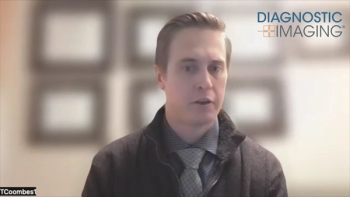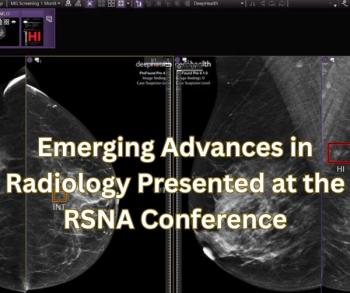Can MRI-Guided Transurethral Ultrasound Ablation Have an Impact for Localized Prostate Cancer?
Follow-up MRI imaging one year after transurethral ultrasound ablation revealed approximately 50 percent decreases in prostate volume and median PSA density, according to recently presented research findings at the 2023 Society of Urologic Oncology (SUO) Annual Meeting.
Emerging research suggests that magnetic resonance imaging (MRI)-guided transurethral ultrasound ablation (TULSA) may be a viable option for the treatment of patients with localized prostate cancer.
For the prospective study, which was recently presented at the 2023 Society of Urologic Oncology (SUO) Annual Meeting, researchers assessed the use of MRI-guided TULSA in 126 patients (median age of 68) with localized
(Editor’s note: This article has been adapted from its original publication in our sister publication
At 1 year after MRI-guided TULSA, PSA levels across the cohort had decreased by 72.1 percent.
Half of the study population (63/126 patients) had received a 1-year follow-up MRI at the time of the analysis. The 1-year imaging results in these patients showed that prostate volume had decreased by 51.4 percent and median PSA density had decreased by 49.9 percent.
“Our experience with TULSA demonstrates substantial post-procedure decreases in PSA level, PSA density, and prostate volume,” wrote lead study author Emily Bochner, M.D., a urology resident at UT Southwestern Medical Center, and colleagues.
The 1-year MRI results also showed that 28.6 percent (18/63) of these patients had “concerning” focal lesions. The location of 12 of these lesions was in field compared to the TULSA ablation area, and the other six lesions were out of field. Subsequent biopsy showed that 44 percent of the concerning lesions detected on MRI were positive for prostate cancer, according to the researchers.
Over a third (36.5 percent) of patients (23/63) who received a 1-year MRI had negative imaging results and subsequently refused to receive a 1-year biopsy. The other 40 patients (63.5 percent) who had received a 1-year MRI “underwent repeat systemic plus targeted (when applicable) biopsy at 1 year,” noted Bochner and colleagues on their poster.
The biopsy results for these 40 patients showed that 26 (65 percent) of these patients were negative for recurrence while 14 (35 percent) of these patients had prostate cancer recurrence. The tumors were Gleason grade (GG) 1 for four of these patients, GG2 for six patients, and GG3 for one patient. The tumors for three of the patients were ungraded due to treatment effect, according to the study investigators.
(Editor’s note: For additional related content on prostate cancer imaging, click
Of the 14 patients with recurrence, 10 (71 percent) were managed with active surveillance and four (29 percent) received salvage treatment. The salvage treatments consisted of surgery, radiation, or repeat TULSA.
Emphasizing that salvage treatment was only required in four out of 63 patients with one-year follow-up data, Bochner and colleagues et al concluded that salvage treatment being required by only 4 (6%) of 63 patients with 1 year of follow-up shows “promising primary treatment efficacy at this early time point in our TULSA experience.”
Reference
1. Bochner E, Balcazar J, Recchimuzzi, et al. MRI guided transurethral ultrasound ablation (TULSA) of localized prostate cancer: single institution experience of treatment efficacy. Presented at: 2023 Society of Urologic Oncology Annual Meeting. November 28 – December 1, 2023; Washington, DC. Abstract 188.
Newsletter
Stay at the forefront of radiology with the Diagnostic Imaging newsletter, delivering the latest news, clinical insights, and imaging advancements for today’s radiologists.





























